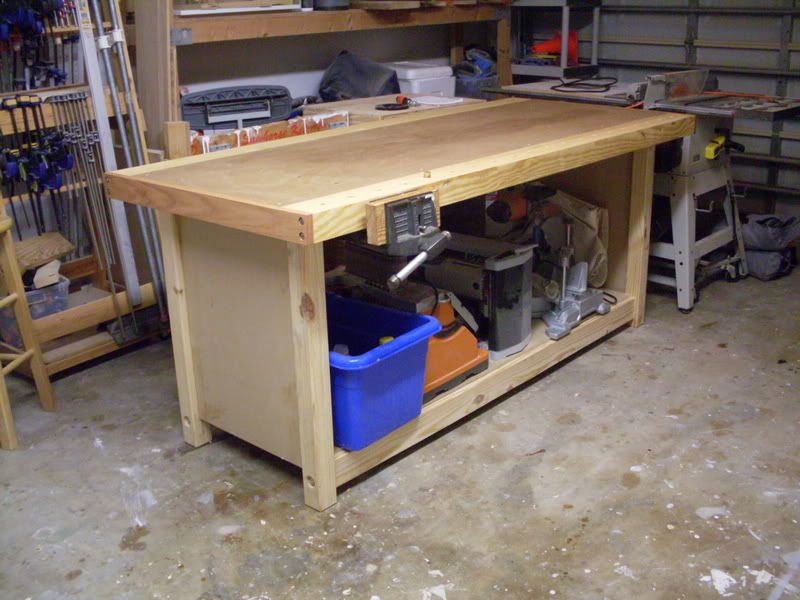I just noticed in your title graphic that you have a tail vise on the bench in the picture. I’m starting to plan for building a workbench myself and I’m leaning towards a tail vise in the end vise position. Do you have any thoughts/tips/advice concerning a tail vise, its construction/hardware/etc?
—– Reader Torch02
That’s actually a picture from when Marc Spagnuolo and I were at a woodworking school up in Indiana. That bench was one of ten bought from Garrett Wade for the students to work at. Apparently, even though they cost a pretty penny when they were bought, the benches – particularly their tail vises – were pretty prone to damage. Of course, they were getting a lot more use – and abuse – than any bench would normally, as students were using them many times a day.

Now, what’s my own personal experience with a tail vise? Well, let’s just say for my bench at home, it was an aborted attempt. I was following the instructions that came with the hardware, and I got all twisted around.
My solution was to drop back and punt. I replaced the boards that looked as if they had been chewed upon mightily by deranged beavers and just put in solid boards. I drilled a row of bench dogs, and when I want to clamp something, I use the Veritas wunder pup and a bench dog. It works pretty well

Of course that option does have its limitations… the Wunder Pup has only a 6″ throw on it and it is very finely threaded… so it does take a little patience to get the board clamped down.
If I had to do it all over again (I just might – I can replace the top and keep the base…) I would consider installing what’s known as a wagon vise.

You don’t need any expensive steel running gear save a shoulder vise screw. Those are a lot cheaper than a whole tail vise setup and are mostly made of wood.
Another option would be to just simply mount another steel fast acting vise on the tail and line up the dog holes with the vise’s built in dog. Probably the easiest way to go, and a decent face vise can be had for about $80 or so.
I saw this plan in Wood. It’s a way to create a vise using only pipe clamps mounted to your bench. Great if money is short and you like to MacGuyver things together.
And, if you want to go even CHEAPER than that, get a pair of bench dogs and use some opposing wedges to snug the work between them. You can make the wedges any thickness you want so they won’t interfere with planing thin boards.
I realize you asked me what time it is and I told you how to build a clock… but, hey, you asked!

 Hey, Paul, thanks for the question. Of course, where you place the vise is your own decision, but I think that you’ll find the traditional place is on the corner opposite of your main hand. In your case (and mine), it’s gonna be on the left side of the bench front. Basically, you want to push the plane toward where the vise is located. This way, a board jack merely has to support the work, while you get the gripping power and most support from the vise at the end of the push.
Hey, Paul, thanks for the question. Of course, where you place the vise is your own decision, but I think that you’ll find the traditional place is on the corner opposite of your main hand. In your case (and mine), it’s gonna be on the left side of the bench front. Basically, you want to push the plane toward where the vise is located. This way, a board jack merely has to support the work, while you get the gripping power and most support from the vise at the end of the push.